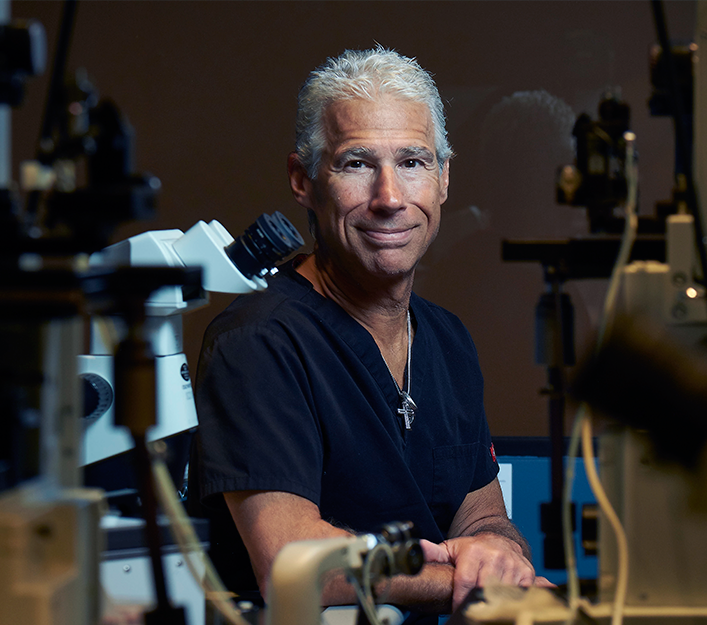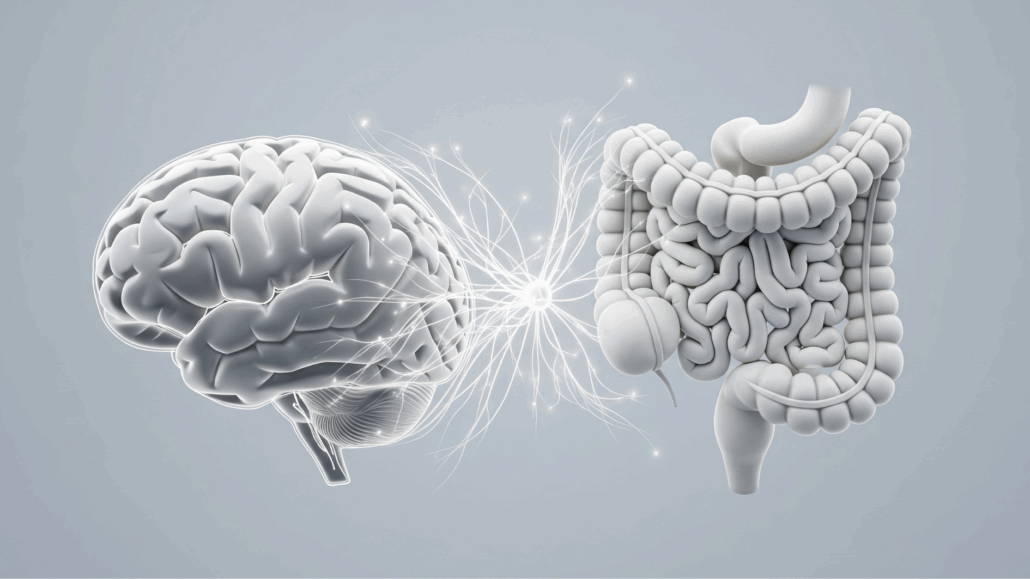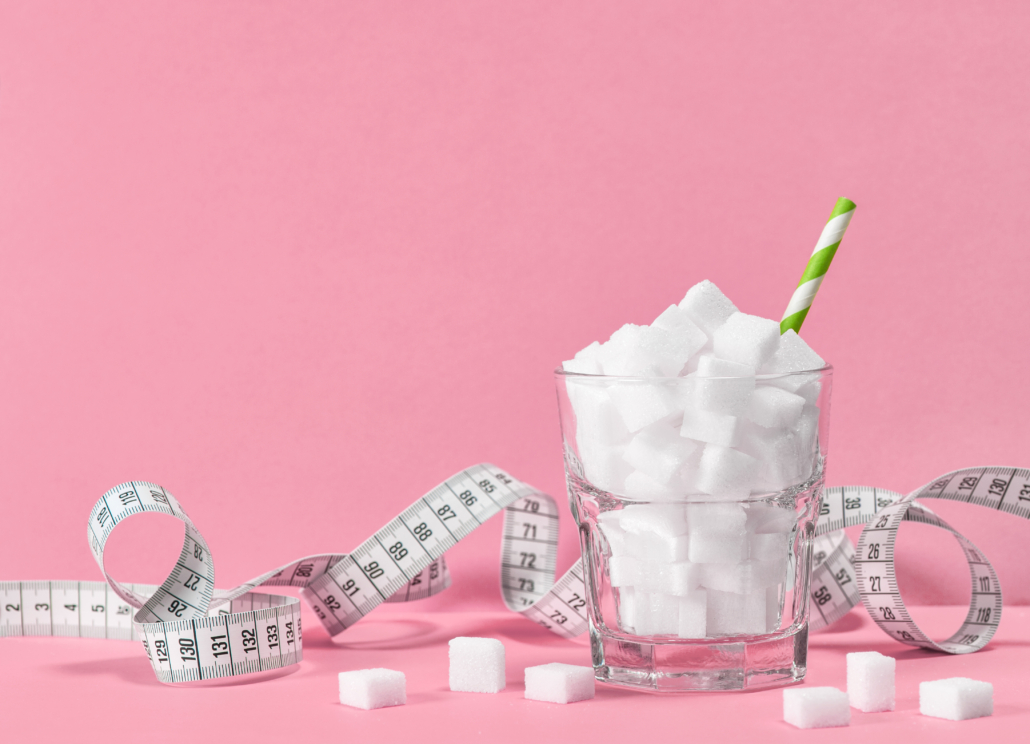We include products in articles we think are useful for our readers. If you buy products or services through links on our website, we may earn a small commission.
What Are Carbs? And What Do They Do To Us?
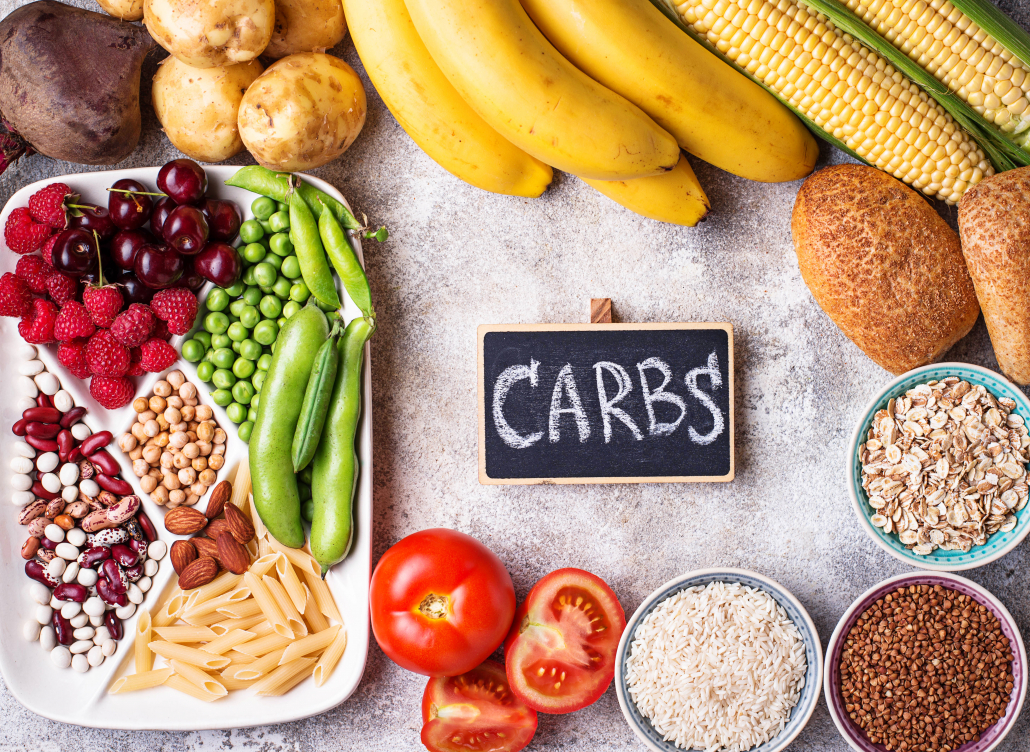
Table of Contents
- Fast Facts
- What are Carbohydrates?
- Types of Carbohydrates
- What are net carbs?
- Sugar Alcohols
- Carbs in the Human Diet
- How many carbohydrates do people need?
- How your body processes carbohydrates
- Why there’s no such thing as “good” carbs
- What are the benefits of restricting carbs?
- The bottom line on carbs
If you’re paying attention to your diet, you’ve probably heard of “good carbs,” “bad carbs,” “fast carbs,” “slow carbs”, and “no carbs.” But have you ever stopped to ask, what are carbs anyway? And is there really such a thing as a good carb?
In this article, we’re going to go back to the junior high biology basics to remind you that every carbohydrate is really just sugar and why all carbohydrates should be limited or avoided altogether.
Fast Facts
- Carbs or Carbohydrates are one of three macronutrients found in food.
- All carbs are made up of sugars molecules
- Carbohydrates are generally classified by how many sugar molecules make up the final structure
- Most carbohydrates (from table sugar to carrots, potatoes, and broccoli) are broken down into simple sugars when digested and absorbed into the bloodstream.
- Because all carbohydrates break down into simple sugars, they all have a toxic effect on our bodies.
What are Carbohydrates?
Carbohydrates, or carbs, are sugar molecules.
Along with fat and protein, carbohydrates are one of the three macronutrients found in food.
Carbohydrates have many types and many names and may be referred to as glucose, sugar, carbs, carbohydrates, starches, and more.
Carbohydrates are the basis of foods as different as lollipops, bread, potatoes, grains, and lettuce. The carbohydrates in each of these foods is made from the same basic building blocks; single sugar molecules. These molecules form a ring-like structure that can link together to form more “complex” carbs.
The shared molecular structure of carbohydrates is why every carb you digest from table sugar to so-called “good” carbs like whole grains and veggies, all break down into glucose or other sugars when digested. These sugars are sent into your blood, raising your blood sugar levels and have the same toxic effect on your body as candy, cola, or other sugary products.
Consistently high blood sugar caused by carb-dominant diets leads to numerous diseases and disorders including diabetes, obesity, heart disease, cancers, Alzhiemers, and infertility among many others. We’ll dive into the “how” and “why” of carbs and disease later on.
Types of Carbohydrates
There are many types of carbohydrates, and they’re classified by their size (how many single sugar molecules make up the final carbohydrate structure). All carbohydrates are made up of at least one sugar molecule. Simple carbs are one or two sugars. Complex carbs are made from many sugar molecules linked together.
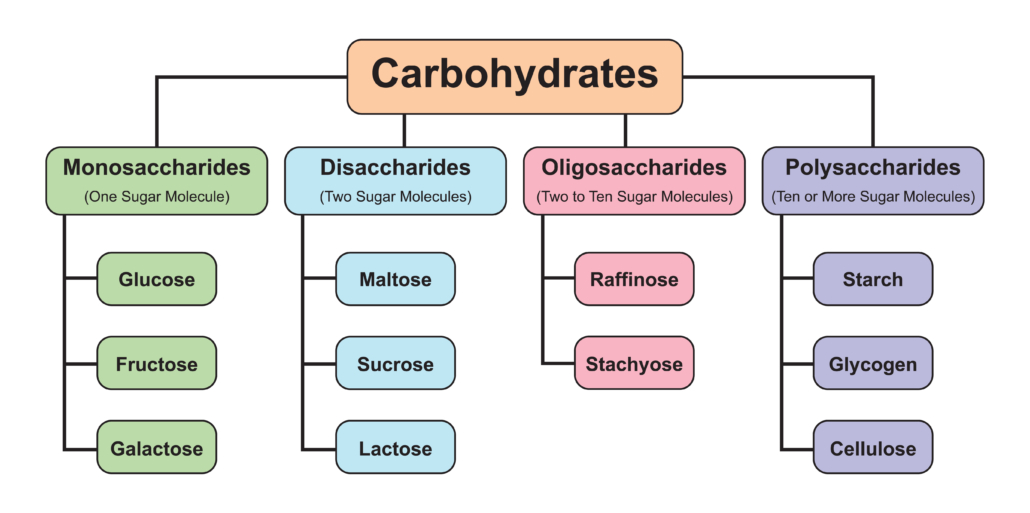
Simple Sugars
Simple sugars When most see the word sugar, they think of the white stuff they put in their coffee, commonly known as table sugar. That kind of sugar is called sucrose and is a disacchar. And it’s only one of many different sugar types. Simple sugars are made up of one or two sugar molecules. If the sugar has only one molecule it is called a monosaccharide, if it has two, it is called a disaccharide.
Monosaccharides – Single Unit Simple Sugars
Monosaccharides are made up of a single (mono) sugar molecule. There are three main monosaccharides and each can combine to form many of the different types of sugars found in foods.
Glucose
You get glucose from many foods including bread, fruits, vegetables, and dairy products. glucose is transported via the bloodstream to your tissues where the hormone insulin allows it to enter cells where it’s used as an energy source.
Fructose
Fructose, along with glucose makeup table sugar. It’s also part of various sweeteners including high-fructose corn syrup and agave syrup, and many products that list added sugars on the nutrition label. Before industrialization people rarely consumed much fructose. Now, most people’s dietary intake of fructose comes from industrial sources. In whole foods like fruits and vegetables, fructose exists in relatively low amounts.
Galactose
A simple sugar found in many dairy products. When you eat galactose, it is primarily converted into glucose and stored as glycogen–a storage unit of sugar.

Disaccharides
When two simple sugars are joined together they’re called disaccharides. Table sugar is the most common example of a disaccharide. It’s a combination of glucose and fructose molecules. When you eat disaccharides they are broken down through the process of digestion into monosaccharides (simple sugars) and absorbed into our bloodstream.
Sucrose,
Formed following photosynthesis in green plants.
Lactose
Milk sugar, found in the milk of all mammals.
Maltose
A product of the breakdown of starches during digestion and fermentation.
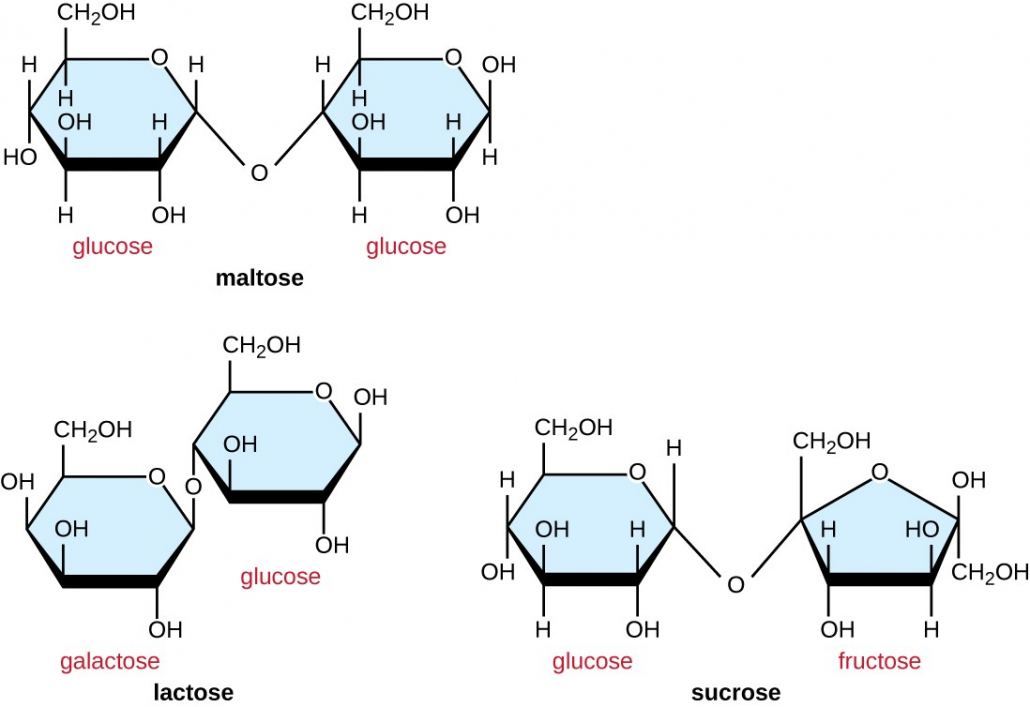
Complex Carbs
Complex carbs are chains of sugar molecules made up of 3 to hundreds of monosaccharides linked together, and they fall under two main categorization:
- Oligosaccharides: 3-10 monosaccharides linked together
- Polysaccharides: More than 10 monosaccharides linked together
Famously, at least dietarily speaking, complex carbs make up the majority of sugar molecules in some of our favorites like pasta, bread, potatoes, corn, spinach, carrots, and broccoli.
Oligosaccharides
These carbs are made of 3 to 10 simple sugars.
Since humans lack the enzymes to break down Oligosaccharides we do not absorb them into our blood. Instead, they pass into our large intestine where they are fermented by bacteria. This is why when you eat foods that contain high amounts of oligosaccharides, you can get very flatulent.
Polysaccharides
Are made from many simple sugars joined together. Foods that contain polysaccharides include:
- Starchy carbohydrates like potatoes, corn, rice, and wheat flour.
- Foods that contain fiber like lentil, beans, and peas.
- Foods that contain cellulose including fruits like apples (the skin) and vegetables like kale and lettuce.
Starches
These polysaccharides include starchy grains like:
- Wheat
- Oats
- Rye
- Barley
- Rice
- Cornmeal
Foods made from starches include:
- Bread
- Cereal
- Pasta
- Tortillas
- Chips
- Crackers
Though starchy foods don’t taste sweet unless processed with added sugars, they are still just long chains of sugar (glucose) molecules. When you digest starches your body breaks the bonds between these molecules. The resulting simple sugar molecules are absorbed into your blood, raising your blood sugar levels
Fiber
Is a form of polysaccharide that does not get broken down during digestion. These indigestible carbs pass through the stomach, small intestine, colon, and then out of the body. Fiber comes primarily from the outer covering of seeds (cellulose) and the stalks and leaves of vegetables.
Glycogen
Glycogen is a storage molecule of sugar in your body and it’s made of many short branches of linked glucose. When your blood sugar drops your body can break down glycogen into glucose that’s released into the bloodstream. But the liver can only store around 250 and 400 calories worth of glycogen. When your body runs out of glycogen, your liver creates glucose out of the protein in your muscles, or in your diet.
Glycogen is also stored in the muscles, but it’s used only by the muscles during exercise and cannot be broken down to balance blood sugar levels. The body stores enough glycogen in the liver, muscles and brain to last for 24 hours.
What are net carbs?
Net carbohydrates or “net carbs” is a popular term among low-carb and keto dieters. Net carbs are the sum of carbs in food after subtracting the fiber. In whole foods fiber is not fully digested and absorbed. This is why fiber is often referred to as “insoluble”.
Here’s an example of how net carbs are calculated: An average avocado has 12g total carbs and 9g fiber. When you subtract the fiber from the total carbs you get net carbs of 3g.
The 3g of carbs are composed of both simple sugars along with complex carbohydrates which will be broken down into simple sugars when digested.
When it comes to whole foods like avocados this calculation is accurate, but when considering processed foods like energy bars, it can be misleading. Often with processed foods, the net carbs subtracted are sugar alcohols, which can still increase blood sugar.
Another way net carbs can be misleading is that it ignores the fact that fiber has no positive health benefits, and is likely harmful.
Fiber may harm more than help
Fiber from plants ferments in our bodies as it breaks down. When you chew fiber, you simplify it and expose it to bacteria and yeasts that feed on it during the process of digestion. Fermentation of plant materials produces heat, gas, aldehyde, alcohol, and methane. This exothermic reaction heats and damages local organs and tissues.
A truly eye-opening study in the World Journal of Gastroenterology looked at all the studies over the previous 35 years investigating the link between fiber and colon health:
“A strong case cannot be made for a protective effect of dietary fiber against colorectal polyp or cancer. Neither has fiber been found to be useful in chronic constipation and irritable bowel syndrome. It is also not useful in the treatment of perianal conditions. The fiber deficit-diverticulosis theory should also be challenged…we often choose to believe a lie, as a lie repeated often enough by enough people becomes accepted as the truth. We urge clinicians to keep an open mind. Myths about fiber must be debunked and truth installed.”
Sugar Alcohols
Sugar alcohol is a sweet low-calorie carbohydrate popular in many low-carb and “keto-friendly” snacks. Sugar alcohol is neither alcohol nor true sugar. As the name suggests, the chemical structure partially resembles sugar and partially resembles alcohol. However, since sugar alcohols do not contain ethanol, the compound in alcohol that gets you drunk, they are safe for people recovering from addiction.
Sugar alcohols are incompletely absorbed and metabolized by the body. This means that they contribute fewer calories than sugars, but they still raise blood sugar.
Common sugar alcohols include:
- Xylitol
- Erythritol
- Sorbitol
- Maltitol
A note of caution on low-carb sweeteners
Eating artificial sweeteners interferes with the body’s natural reward centers. People eat and crave sweet things because sweet foods in the natural environment usually mean loads of quick calories.
Alternative sweeteners give us incomplete satisfaction by sending mixed signals through the metabolic system. The first signal is that we have eaten something sweet. The second is that we haven’t actually consumed the calories associated with the sweetness. Our bodies respond by seeking more calories. This cycle defeats the original purpose of alternative sweeteners to reduce cravings and calories.
Carbs in the Human Diet
Though most humans across the world and throughout time have at least some carbohydrates in their diets, the quantities, types, and ratios of these carbohydrates to other macronutrients vary dramatically. These variations lead to a wide range of health and disease outcomes.
Carbs in Western Diets
In a typical Western diet, carbs account for 33 to 70% of caloric intake. A 2016 study looking at the American diet found that Americans get 42% of their daily calories from refined grains and processed sugars. This works out to over 100 lbs per year or 34 teaspoons of added sugars every day.
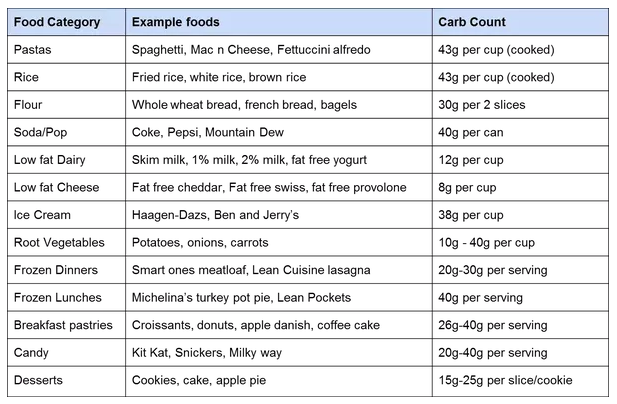
You’re probably thinking, not me! But most of this added sugar is hidden in processed foods. Many “healthy,” low-fat food options that we don’t consider to be sweet, like tomato sauce and yogurt, are packed with sugar. It’s common for food manufacturers to bump up the sugar to maintain flavor and texture when they produce “low-fat” and “non-fat” products. That fancy drink from your coffee shop or “lite” dressing on that “healthy” salad you had for lunch has way more sugar than you’d expect, not to mention the carbs in all those veggies.
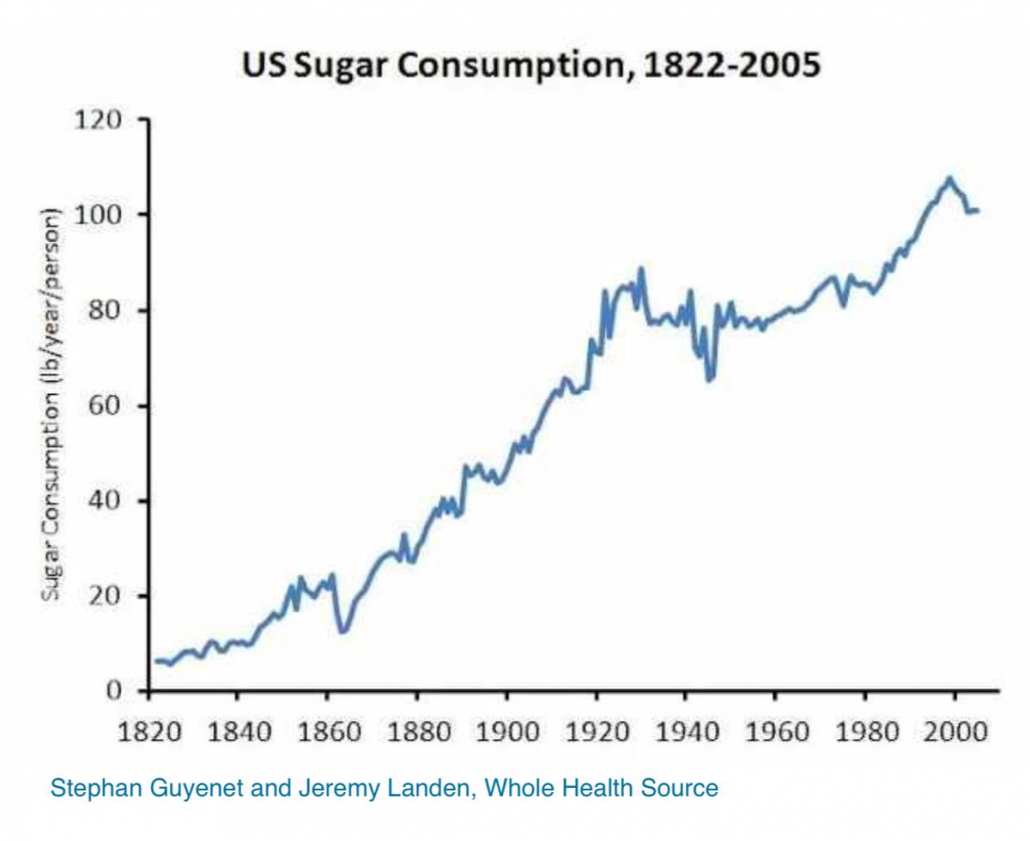
Added sugars in Western Diets:
- Refined white sugar, brown sugar, raw sugar, beet sugar, coconut sugar, turbinado sugar, etc.
- Dextrose
- High-fructose corn syrup
- Honey
- Maple syrup
- Molasses
- Agave nectar
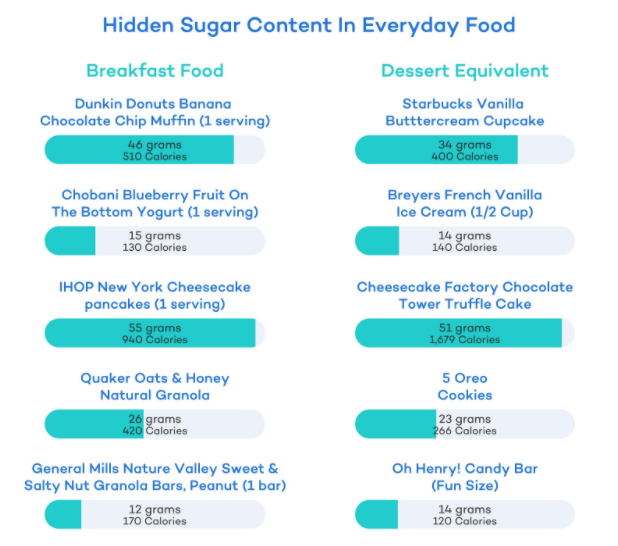
Carbs in Hunter Gatherer Diets
Hunter gatherers generally ate less of a variety and less total carbohydrates than modern humans. When our ancestors did eat carbs, they usually came in the form of low-nutrient tubers and seasonal fruits.
Recent research looking at the diets of the 229 remaining hunter gatherer tribes shows that a low carbohydrate and high-fat diet is the most common macronutrient ratio. A 2011 study by Ströhle and Hahn, found that 9 out of 10 hunter gatherer groups got less than a third of calories from carbohydrates.
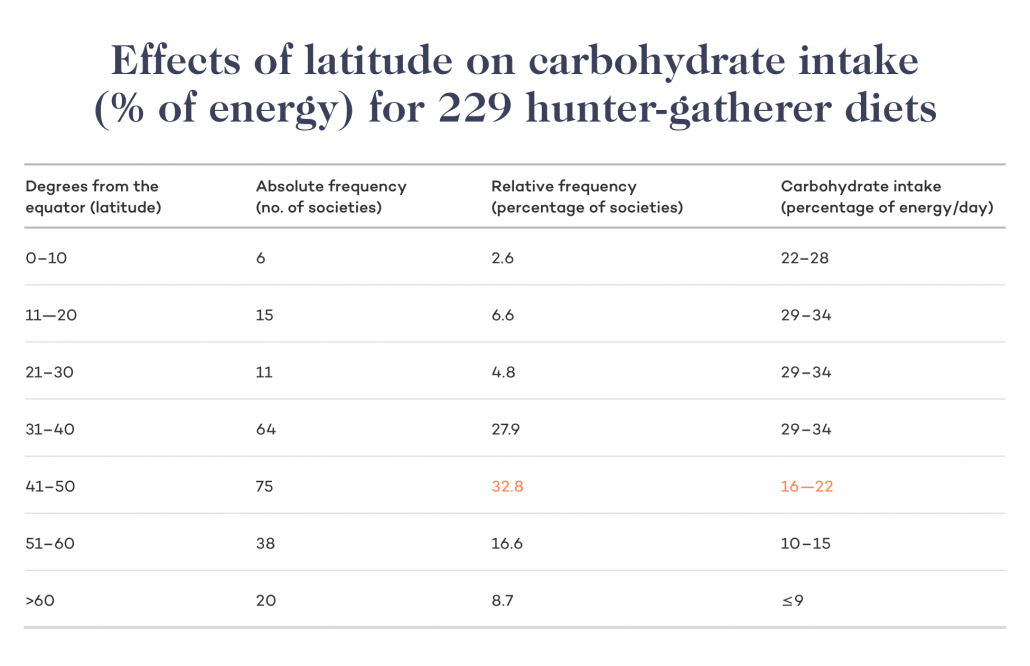
The low-carb diets of hunter gatherers are likely a significant health factor. These traditional peoples have very low to virtually no incidences of the so-called diseases of civilization, including coronary heart disease, obesity, hypertension, type 2 diabetes, epithelial cell cancers, inflammatory autoimmune disease, and osteoporosis.
How many carbohydrates do people need?
The short answer is none. After being weaned from your mother’s milk, you can live without eating another carb for the rest of your life.
When carbs are absent from your diet, your body converts fat into fatty-acid molecules called ketones that become the main energy source for most of your cells.
Red blood cells, along with a small selection of cells in your brain and kidneys require glucose. However, your body can make all the glucose it needs from protein and fat (amino acids and fatty acids) in a process called gluconeogenesis.
There are nine essential amino acids from protein and the two essential fatty acids, from dietary fat, but there are zero “essential” carbohydrates.
Zero Carbs Goes Mainstream
The fact that we don’t need to eat any carbohydrates is not a fringe belief. It’s affirmed in the 2005 textbook “Dietary Reference Intakes for Energy, Carbohydrate, Fiber, Fat, Fatty Acids, Cholesterol, Protein, and Amino Acids,” by the U.S. Food and Nutrition Board of the Institute of Medicine.
“The lower limit of dietary carbohydrate compatible with life apparently is zero, provided that adequate amounts of protein and fat are consumed.
There are traditional populations that ingested a high fat, high protein diet containing only a minimal amount of carbohydrate for extended periods of time (Masai), and in some cases for a lifetime after infancy (Alaska and Greenland Natives, Inuits, and Pampas indigenous people). There was no apparent effect on health or longevity.
Caucasians eating an essentially carbohydrate-free diet, resembling that of Greenland natives, for a year tolerated the diet quite well. However, a detailed modern comparison with populations ingesting the majority of food energy as carbohydrate has never been done.”
How your body processes carbohydrates
Digestion
In order for carbs to be absorbed into the bloodstream and used as energy, they first have to be broken down into monosaccharides–mainly glucose. For example, when you eat a cookie, your body sends the simple sucrose sugars directly into your bloodstream. At the same time, the complex starches from the wheat flour are broken down by enzymes into glucose.
Absorption
Once broken down into monosaccharides, the individual sugar molecules (glucose, fructose, or galactose) are absorbed in the intestines and sent into the bloodstream. Carbohydrates like oligosaccharides and fiber that cannot be broken down into monosaccharides, bypass absorption and get sent to the gut where a portion is fermented (fed on) by gut bacteria, and the rest are excreted in the stool.
Processing and Metabolism
Glucose and Galactose
The common theory behind glucose and galactose is that every cell in your body is capable of using them for energy.
The carbohydrates you eat, except for insoluble fiber and fructose, are either absorbed directly into your blood or broken down by enzymes into single sugars called glucose. Glucose is what is referred to as “blood sugar. The more glucose that enters your bloodstream the more your blood sugar rises.
To make glucose useful as a fuel for your cells, your pancreas produces a hormone called insulin. Insulin tells cells to accept the sugar in your bloodstream. The level of your blood sugar, and how long it stays elevated depends on the number of carbs you eat, the insulin you produce, and how sensitive your cells are to insulin.
Fructose
The fructose that you get from fruit is absorbed differently than glucose but is still a factor in sugar toxicity. Fructose bypasses the pancreas and goes straight to the liver where it gets converted to glycogen, a long-chain carbohydrate that your body stores in your muscles and liver for later use.
Fructose doesn’t directly spike your blood sugar like other simple sugars and starches. However, your glycogen storage areas in your liver and muscles are limited. With nowhere to go, the glucose from the other carbohydrates you eat is converted into fat in your liver and on your body. This process of storing extra glucose as fat (lipogenesis) is the cause of obesity and fatty liver disease.
Astonishingly, it’s estimated that 100 million Americans or 25% of the population has fatty liver disease. While a staggering 42% of Americans are obese.
A key point here is that eating carbs makes you fat and sick.
It’s important to acknowledge that all carbs other than fiber can contribute to elevated blood sugar–whether they come from added sugars and processed grains, or from whole fruits, and vegetables.
Excess Carbohydrates
When glycogen reserves are filled by our steady stream of glucose, fructose, and other carbs, the liver converts the excess into fat, which leads to fatty liver disease, obesity, diabetes, a litany of inflammatory and metabolic diseases that we’ll get into later.
Why there’s no such thing as “good” carbs
You’ve probably heard the terms “good carbs” and “bad carbs”. Though it’s true that processed sugars can cause faster and higher increases in blood sugar, nearly all the carbs you eat, from kale to candy, are broken down into glucose or other simple sugars and sent into your blood, raising blood sugar.
To keep your blood sugar levels in check, your liver produces a constant stream of insulin that turns sugar into fat that’s stored on your body. But just as soon as the initial flood of excess sugar is turned into fat, your body begins to run out of the limited sugar in your blood, so your cells scream out for more sugar. You get tired, hungry, irritable, and distracted. The cycle goes on and on.
This constant stream of blood sugar can wreak havoc on your hormones while causing inflammation that leads to numerous diseases and disorders.
Carbs cause Inflammation
Carbs cause inflammation through two direct processes: Glycation and oxidative damage. Indirectly, eating carbs causes inflammation because fruits and veggies are often loaded with plant toxins and antinutrients. Let’s dive a little deeper into each of these issues.
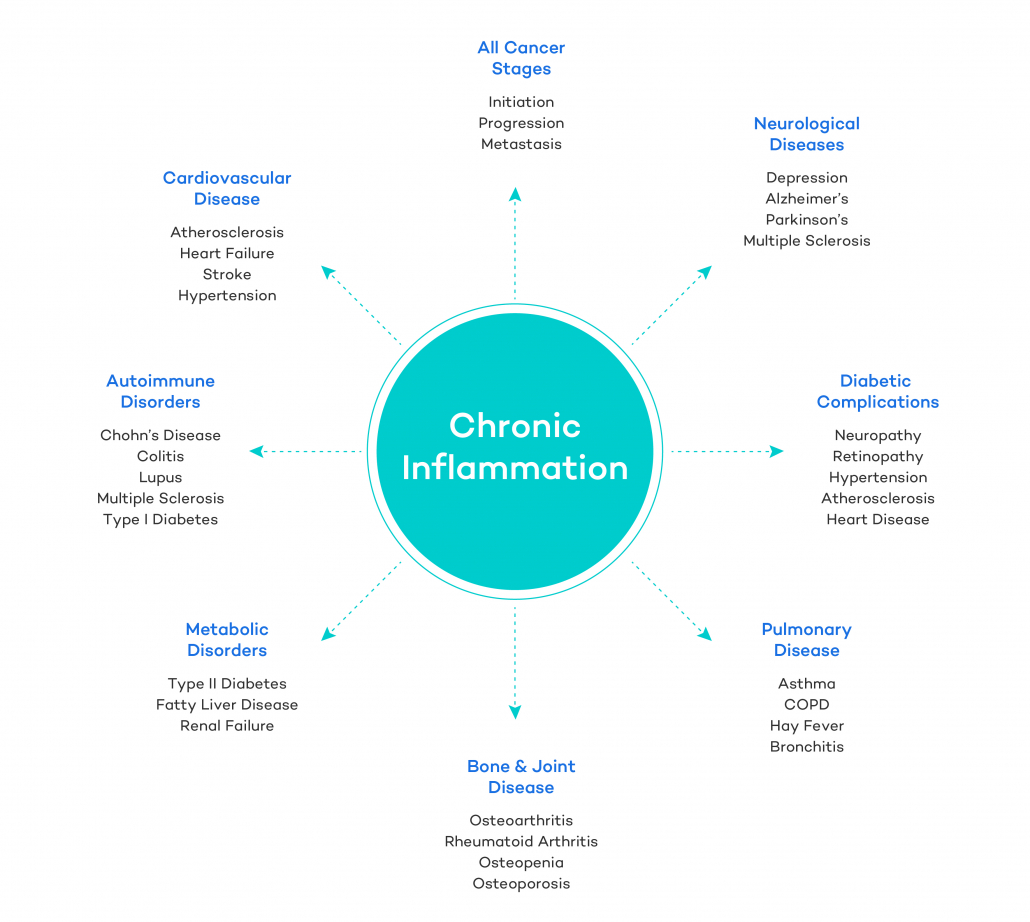
Glycation
Glycation is a process where sugars bind permanently to proteins, fats, RNA, and DNA, turning them into compounds called “Advanced Glycation End Products” or AGE’s. At healthy levels, glycation is a necessary metabolic process. But dumping excessive carbs into your system can cause chronic cell and tissue damage leading to kidney failure, heart disease, infertility, and Alzheimer’s disease among many others.
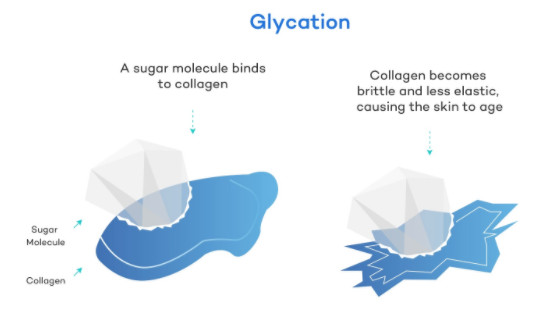
Oxidative damage
You’ve probably heard of antioxidants, and that they’re good for you. This is because they do battle with another type of molecule called pro-oxidants. Pro-oxidants can cause damage by stealing electrons from cells and DNA.
However, in healthy people, both pro-oxidants and antioxidants are in balance. Each plays its essential role in our bodies. Getting extra antioxidants through diet or supplements is only important when you have an overabundance of pro-oxidants.
Refined carbohydrates are pro-oxidants. So in Western diets high in refined carbohydrates, pro-oxidant overabundance is common. Not surprisingly, there are a host of studies demonstrating that consuming refined carbohydrates is a leading cause of inflammation and related diseases.
Plant toxins
When you eat fruits and veggies, you’re dumping more than carbs into your body. Plants are loaded with toxins and antinutrients. Plants use these chemicals to defend themselves from fungi, insects, and animal predators, including humans.
Plant toxins and antinutrients are frequently the culprits behind headaches, asthma, joint pain, and other allergic responses associated with food sensitivities, digestive complaints, and various inflammatory autoimmune diseases.
Metabolic disorders
Eating carbohydrates is responsible for a number of related metabolic disorders including increased blood pressure, high blood sugar, excess body fat, and abnormal cholesterol and triglyceride levels. These metabolic disorders increase your risk of stroke, heart disease, and type 2 diabetes.
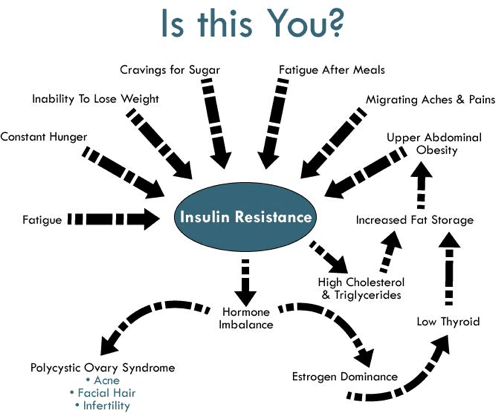
Insulin resistance
When there’s too much glucose in your bloodstream your cells stop responding to insulin, essentially shutting the door on sugar. This is called “insulin resistance” or “pre-diabetes.”
Diabetes
When cells stop responding to insulin, your body reacts by secreting even more insulin, bullying your cells to open their doors to let in more sugar. Over time the insulin producing cells in your pancreas will burn out. Without the ability to make insulin your body gets toxically overwhelmed by glucose. This process of glucose toxicity leads to diabetes.
Obesity
Carbohydrates from processed foods, grains, rice, flour, and starchy vegetables are quickly converted by your digestive system into simple sugar. Spikes in sugar triggers your body to produce insulin. Insulin converts sugar into fat that we store in our bodies. What this means is that carbs cause obesity, not the fat we eat. Obesity is not the cause of our diseases. It’s a symptom of the real cause: hyperglycemia (i.e., high blood sugar).
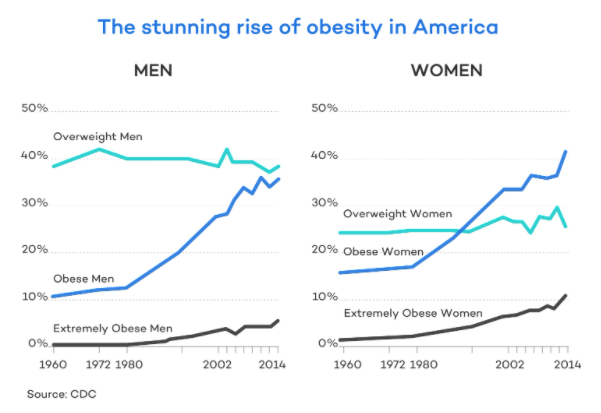
Carbs and Infertility
Lowering carb intake reduces insulin leading to a positive cascading effect that helps the body rebalance sex hormones. Healthy hormonal cycles allow women to resume regular ovulation and it increases sperm counts in men.
The science supporting the link between insulin and infertility has a lot to tell us. A 2012 study demonstrated that as carb intake increased in men, sperm counts declined. A large-scale 2009 study by the Harvard School of Public Health followed 18,555 women with no history of infertility over eight years and discovered that among the 438 women who reported infertility, there was a correlation between high sugar and carb intake and difficulty getting pregnant.
Another wide ranging analysis looking at PCOS and infertility showed that reducing insulin resistance was the key factor in treating PCOS and increasing fertility.
What are the benefits of restricting carbs?
A low-carb diet provides many health benefits. Restricting carbs can:
- Reduce inflammation and related mental and physical health disorders
- Reduce insulin resistance
- Eliminate sugar cravings
- Reduce excess body fat
The bottom line on carbs
Carbohydrates are one of three macronutrients–along with fats and proteins–that our body uses for energy. However, carbs are not necessary in the human diet.
All carbohydrates from added sweeteners to grains and vegetables, are broken down in the body into simple sugars that raise blood sugar.
High carbohydrate consumption like we see in the Standard American and Western diets, leads to numerous health problems. Insulin resistance, diabetes, and obesity are all caused by excess carbohydrate intake leading to chronically elevated blood sugar levels.
A diet high in carbohydrates can also cause glycation and oxidative stress leading to chronic inflammatory diseases, including cancer, heart disease, dementia, and infertility among others.
We recommend substantially reducing dietary carbohydrates and replacing them with healthy nutrient-rich animal fats and proteins.










